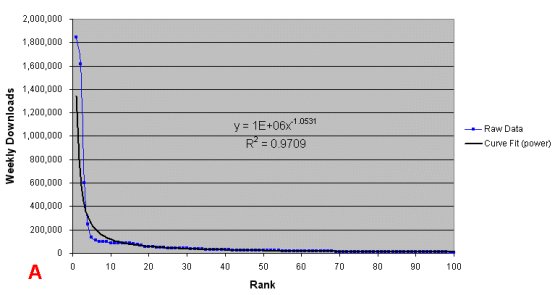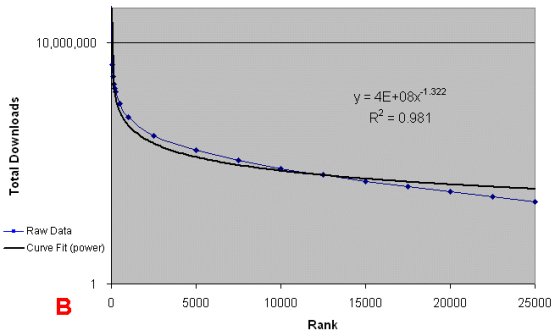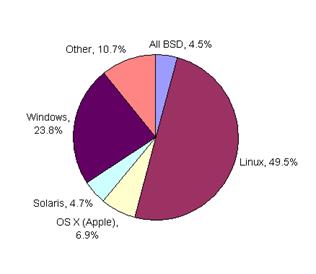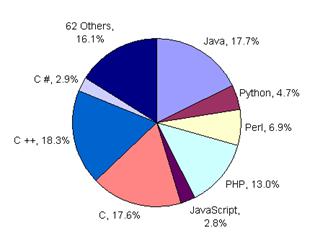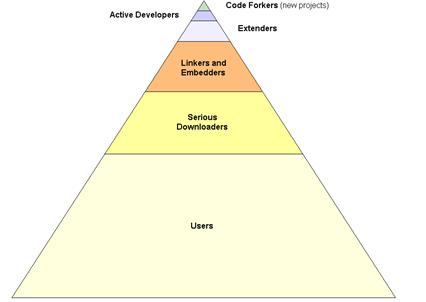As noted by the Nobel laureate economist Herbert Simon more than 30 years ago:[1]
What information consumes is rather obvious: it consumes the attention of its recipients. Hence a wealth of information creates a poverty of attention, and a need to allocate that attention efficiently among the overabundance of sources that might consume it. . . . The only factor becoming scarce in a world of abundance is human attention.
Spiraling document growth combined with the universal migration of digital information to the Internet has been come to be known by the terms “infoglut” or “information overload.” The issue, of course, is not simply massive growth, but more importantly the ability to find the right information at the right time to make actionable decisions.
Document assets are poorly utilized at all levels and within all departments within enterprises. The magnitude of this problem was first documented in a BrightPlanet white paper titled, Untapped Assets: The $3 Trillion Value of U.S. Enterprise Documents. An open question in that paper was why nearly $800 billion per year in the U.S. alone is wasted and available for improvements, but enterprise expenditures to address this problem remain comparatively small and with flat growth in comparison to the rate of document production.
Earlier parts in this series addressed whether the root causes of this poor use were due to the nature of private v. public information or due to managerial and other barriers to collaboration. This part investigates whether high software and technology costs matched with poor performance is a root cause.
The Document Situation Within U.S. Enterprises
Document creation represents about $3.3 billion in annual costs to U.S. enterprises, or about 30% of gross national product, $800 billion of which can be reclaimed through better access, recall and use of these intellectual assets. For the largest U.S. firms, annual benefits from better document use average about $250 million per firm.[2]
Perhaps at least 10% of an enterprise’s information changes on a monthly basis.[3] A 2003 UC Berkeley study on “How Much Information?” estimated that more than 4 billion pages of internal office documents are generated annually in the U.S. with archival value. The percentage of unstructured (document) data to the total amount of enterprise data is estimated at 85% and growing.[4] Year-on-year office document growth rates are on the order of 22%.[2]
Based on these averages, a ‘typical’ document may cost on the order of $380 each to create.[5] Standard practice suggests it may cost on average $25 to $40 per document simply for filing.[6] Indeed, labor costs can account for up to 30% of total document handling costs.[7] Of course, a “document” can vary widely in size, complexity and time to create, and therefore its individual cost and value will vary widely. An invoice generated from an automated accounting system could be a single page and be produced automatically in the thousands; proposals for very large contracts can take tens or thousands or even millions of dollars to create.
According to a Coopers & Lybrand study in 1993 90 percent of corporate memory exists on paper.[8] A Xerox Corporation study commissioned in 2003 and conducted by IDC surveyed 1000 of the largest European companies and had similar findings:[9],[10]
- On average 45% of an executive’s time was spent dealing with documents
- 82% believe that documents were crucial to the successful operation of their organizations
- A further 70% claimed that poor document processes could impact the operational agility of their organizations
- While 83%, 78% and 76% consider faxes, email and electronic files as documents, respectively, only 48% and 46% categorize web pages and multimedia content as such.
Significantly, 90 to 97 percent of the corporate respondents to the Coopers & Lybrand and Xerox studies, respectively, could not estimate how much they spent on producing documents each year. Almost three quarters of them admit that the information is unavailable or unknown to them.
These statistics apply to the perhaps 20 million knowledge workers within US firms (though other estimates have ranged as high as 40 million).[11], [12] Of this number, perhaps nearly one million have job responsibilities solely devoted to content management. In the largest firms, there are likely 300 employees or more whose sole responsibility is content management.
The High Cost of Searching and Organizing
The average knowledge worker spends 2.3 hrs per day — or about 25% of work time — searching for critical job information, with 60% saying search is a difficult process, made all the more difficult without a logical organization to content.[3] A USC study reported that typically only 32% of employees in knowledge organizations have access to good information about technical developments relevant to their work, and 79% claim they have inadequate information about what their competitors are doing.[13]
According to the Gartner Group, the average enterprise spends from 60 to 70% of its application development budgets creating ways to access disparate data, importantly including documents.[14] IDC estimates that enterprises employing 1,000 knowledge workers may waste well over $6 million per year each in searching for information that does not exist, failing to find information that does, or recreating information that could have been found but was not.[15] As that report stated, “It is simply impossible to create knowledge from information that cannot be found or retrieved.”
Forrester reported in 2002 that 54% of Global 3500 companies relied at that time on homegrown systems to manage content.[16] One vendor cites national averages as indicating that most organizations spend from 5% to 10% of total company revenue on handling documents;[7] Cap Ventures suggests these ranges may be as high as 6% to 15%, with the further observation that 85% of all archived documents never leave the filing cabinet.[6]
An A.T. Kearney study sponsored by Adobe, EDS, Hewlett-Packard, Mayfield and Nokia, published in 2001, estimated that workforce inefficiencies related to content publishing cost organizations globally about $750 billion. The study further estimated that knowledge workers waste between 15% to 25% of their time in non-productive document activities.[17]
Delphi Group’s research points to the lack of organized information as the number one problem in the opinion of business professionals. More than three-quarters of the surveyed corporations indicated that a taxonomy or classification system for documents is imperative or somewhat important to their business strategy; more than one-third of firms that classify documents still use manual techniques.[6]
So, how does an enterprise proceed to place its relevant documents into a hierarchically organized taxonomy or subject tree? The conventional approach taken by most vendors separates the process into two steps. First, each document is inspected and then “metatagged” with relevant words and concepts specific to the enterprise’s view of the world. The actual labels for the tags are developed from an ontology or the eventual taxonomic structure in which the documents will get placed.[18] Then, second, these now-tagged documents are then evaluated on the basis of the tags against the subject tree for conducting the actual placements. But, as noted below, this approach is extremely costly and does not scale.
Web Sprawl: The Proliferation of Corporate Web Sites
Another issue facing enterprises, especially large ones, is the proliferation of Web sites or “Web sprawl.” This proliferation began as soon as the Internet became popular. Here are some anecdotal examples:
- As early as 1995, DEC (purchased by Compaq and then Hewlett Packard) had 400 internal Web sites and Sun Microsystems had more than 1,000[19]
- As reported in 2000, Intel had more than 1 million URLs on its intranet with more than 100 new Web sites being introduced each month[20]
- In 2002, IBM consolidated over 8,000 intranet sites, 680 ‘major’ sites, 11 million Web pages and 5,600 domain names into what it calls the IBM Dynamic Workplaces, or W3 to employees[21]
- Silicon Graphics’ ‘Silicon Junction’ company-wide portal serves 7,200 employees with 144,000 Web pages consolidated from more than 800 internal Web sites[22]
- Hewlett-Packard Co., for example, has sliced the number of internal Web sites it runs from 4,700 (1,000 for employee training, 3,000 for HR) to 2,600, and it makes them all accessible from one home, @HP [23],[24]
- Providence Health Systems recently consolidated more than 200 sites[25]
- Avaya Corporation is now consolidating more than 800 internal Web sites globally[26]
- The Wall Street Journal recently reported that AT&T has more than 10 information architects on staff to maintain its 3,600 intranet sets that contain 1.5 million public Web pages[27]
- The new Department of Homeland Security is faced with the challenge of consolidating more than 3,000 databases inherited from its various constituent agencies.[28]
Corporate IT does not even know the full extent of Web site proliferation, similar to the loss of centralized control when personal PCs entered the enterprise. In that circumstance it took changes in managerial mindsets and new technology such as the PC network by Novell before control could be reasserted. Similar changes will be necessary to corral the issue of Web sprawl.
The Tyranny of Expectations
Vendor hype is one of the causes of misplaced expectations, but also wrong assumptions regarding benefits and costs.
One area where this can occur is in time savings. Vendors and customers often use time savings by knowledge workers as a key rationale for justifying a document initiative. This comes about because many studies over the years have noted that white collar employees spend a consistent 20% to 25% of their time seeking information; the premise is that more effective search will save time and drop these percentages. However, the fact these percentages have held stable over time suggests this is the “satisficing” allocation of time to information search. Thus, while better tools to aid better discovery may lead to finding better information and making better decisions more productively — an intangible and important justification in itself — there may not result a strict time or labor savings from more efficient search.[29]
Another area is lack of awareness about full project costs. According to Charles Phillips of Morgan Stanley, only 30% of the money spent on major software projects goes to the actual purchase of commercially packaged software. Another third goes to internal software development by companies. The remaining 37% goes to third-party consultants.[30]
The Poor Performance of Existing Software
High expectations matched with poor performance is the match in the gas-filled room. Some of the causes of poor document content software performance include:
- Poor Scalability — according to a market report published by Plumtree in 2003, the average document portal contains about 37,000 documents.[31] This was an increase from a 2002 Plumtree survey that indicated average document counts of 18,000.[32] However, about 60% of respondents to a Delphi Group survey said they had more than 50,000 internal documents in their internal environment (generally the department level). Poor scalability and low coverage of necessary documents is a constant refrain by early enterprise implementers
- Long Implementation Times — though average time to stand-up a new content installation is about 6 months, there is also a 22% risk that deployment times exceeds that and an 8% risk it takes longer than one year. Furthermore, internal staff necessary for initial stand-up average nearly 14 people (6 of whom are strictly devoted to content development), with the potential for much larger head counts[33]
- Very High Ongoing Maintenance and Staffing Costs — a significantly limiting factor to adoption is the trend that suggests that ongoing maintenance and staffing costs exceed the initial deployment effort. Based on analysis from BrightPlanet, the table below summarizes set-up, ongoing maintenance and key metrics for today’s conventional approaches versus what BrightPlanet can do. These staffing estimates are consistent with a survey of 40 installations that found there were on average 14 content development staff managing each enterprise’s content portal.[34] Current practices costing $5 to $11 per document for electronic access are simply unacceptable:
|
DOCUMENT
|
INITIAL SET-UP
|
MAINTENANCE
|
|
|
BASIS
|
Staff
|
Mos
|
$/Doc
|
Staff
|
$/Doc
|
| Current Practice |
37,000
|
6.2
|
5.4
|
$4.861
|
6.4
|
$11.278
|
| BrightPlanet |
250,000
|
1.0
|
0.8
|
$0.017
|
0.3
|
$0.078
|
|
|
|
|
|
|
|
| BP Advantage |
6.8 x + up
|
6.2 x
|
6.7 x
|
280.4 x
|
21.4 x
|
144.6 x
|
- Lousy Integration Capabilities — content can not be treated in isolation for the total information needs of the organization
- High TCO — all of these factors combine into an unacceptable total cost of ownership. High TCO and risk are simply too great to raise the priority of document management sufficiently up within IT priorities, despite the general situational awareness that “infoglut” is costing the firm a ton.
The Result: An Immature Market Space
The lack of standards, confusing terminology, some failed projects, immaturity of the space and the as-yet emergence of a dominant vendor have prevented more widespread adoption of what are clearly needed solutions to pressing business content needs. Vendors and industry analysts alike confuse the market with competing terminology, each trying to carve out a unique “message” in this ill-formed space. Read multiple white papers or inspect multiple vendor Web sites and these difficulties become evident. There are no accepted benchmarks by which to compare performance and cost implications for content management. This limitation is especially acute because, given the confusion in the market, there are no independent sources to turn to for insight and quantitative comparisons.
These issues — in combination with high costs, risks and uncertainty of performance and implementation success — lead to a very immature market at present.
Conclusions
Clearly, the high costs of document management software matched with poor performance and unmet expectations is one of the root causes for the $800 billion annual waste in document use within U.S. enterprises. However, as other parts of this series point out, the overall explanation for this wasteful situation is very complex with other important contributing factors at play.
Document use and management software can be considered to be at a similar point to where structured data was at 15 years ago at the nascent emergence of the data warehousing market. Growth in this software market will require substantial improvements in TCO and scalability, among a general increase in awareness of the magnitude of the problem and available means to solve it.
[1] H.A. Simon, “Designing Organizations for an Information Rich World,” in M. Greenberger (ed.),
Computers, Communications, and the Public Interest, pp. 38-52, July 1971, The Johns Hopkins University Press, Balimore, MD. Reprinted in: H.A. Simon,
Models of Bounded Rationality and Other Economic Topics, Vol. 2.Collected Papers, The MIT Press, Cambridge, MA, May 1982.
[2] M.K. Bergman, “Untapped Assets: The $3 Trillion Value of U.S. Enterprise Documents,” BrightPlanet Corporation White Paper, December 2004, 37 pp. See http://www.brightplanet.com/technologydocumentvalue.asp.
[3] Delphi Group, “Taxonomy & Content Classification Market Milestone Report,” Delphi Group White Paper, 2002. See http://delphigroup.com.
[4] P. Lyman and H. Varian, “How Much Information, 2003,” retrieved from http://www.sims.berkeley.edu/how-much-info-2003 on December 1, 2003.
[5] M.K. Bergman, “A Cure to IT Indigestion: Deep Content Federation,” BrightPlanet Corporation White Paper, December 2004, 40 pp. See http://www.brightplanet.com/technology/whitepapers.asp
[6] Cap Ventures information, as cited in ZyLAB Technologies B.V., “Know the Cost of Filing Your Paper Documents,” Zylab White Paper, 2001. See http://www.zylab.com/downloads/whitepapers/PDF/21%20-%20Know%20the%20cost%20of%20filing%20your%20paper%20documents.pdf.
[7] Optika Corporation. See http://www.optika.com/ROI/calculator/ROI_roiresults.cfm
[8] As initially published in Inc Magazine in 1993. Reference to this document may be found at: http://www.contingencyplanning.com/PastIssues/marapr2001/6.asp
[9] J. Snowdon, Documents — The Lifeblood of Your Business?, October 2003, 12 pp. The white paper may be found at: http://www.mdy.com/News&Events/Newsletter/IDCDocMgmt.pdf
[10] Xerox Global Services, Documents – An Opportunity for Cost Control and Business Transformation, 28 pp., 2003. The findings may be found at: http://www.sap.com/solutions/srm/pdf/CCS_Xerox.pdf
[11] Nuala Beck, Shifting Gears: Thriving in the New Economy, Harper Collins Publishers, Toronto, 1993.
[12] pers. comm.., Guy Cresse, Aberdeen Group, November 19, 2001.
[13] S.A. Mohrman and D.L. Finegold, Strategies for the Knowledge Economy: From Rhetoric to Reality, 2000, University of Southern California study as supported by Korn/Ferry International, January 2000, 43 pp. See http://www.marshall.usc.edu/ceo/Books/pdf/knowledge_economy.pdf.
[14] Gartner Group, as reported by P. Hallett, Schemalogic Corporation, at the 2003 Enterprise Data Forum, Philadelphia, PA, November 2003. See http://www.wilshireconferences.com/EDF2003/tripreport.htm.
[15] C. Sherman and S. Feldman, “The High Cost of Not Finding Information,” International Data Corporation Report #29127, 11 pp., April 2003.
[16] J.P. Dalton, “Enterprise Content Management Delusions,” Forrester Research Report, June 2002. 12 pp. See http://www.forrester.com/ER/Research/Report/Summary/0,1338,14981,00.html.
[17] A.T. Kearney, Network Publishing: Creating Value Through Digital Content, A.T. Kearney White Paper, April 2001, 32 pp. See http://www.adobe.com/aboutadobe/pressroom/pressmaterials/networkpublishing/pdfs/netpubwh.pdf.
[18] Though most widely used, the concept of “taxonomy” began with Linnaeus whose purpose was to name and place organisms within a hierarchical structure with dichotomous keys (yes, no) deciding each branch. The result is to place every species within a unique taxon including such concepts as family, genus and species. Content subject taxonomies allow multiple choices at each branch and therefore do not have a strict dichotomous structure. “Ontologies” better refer more generally to the nature or “being” of a problem space; they generally consist of a controlled vocabulary of related concepts. Ontologies need not, and often do not, have a hierarchical structure, and are therefore also not strictly accurate. “Subject tree” visually conveys the hierarchical, nested character of these structures, but is less “technical” than other terms.
[19] D. Strom, “Creating Private Intranets: Challenges and Prospects for IS,” an Attachmate White Paper prepared by David Stron, Inc., November 16, 1995. See http://www.strom.com/pubwork/intranetp.html.
[20] A. Aneja, C.Rowan and B. Brooksby, “Corporate Portal Framework for Transforming Content Chaos on Intranets,” Intel Technology Journal Q1, 2000. See http://developer.intel.com/technology/itj/q12000/pdf/portal.pdf.
[21] J. Smeaton, “IBM’s Own Intranet: Saving Big Blue Millions,” Intranet Journal, Sept. 25, 2002. See http://www.intranetjournal.com/articles/200209/ij_09_25_02a.html.
[22] See http://www.wookieweb.com/Intranet/.
[23] D. Voth, “Why Enterprise Portals are the Next Big Thing,” LTI Magazine, October 1, 2002. See http://www.ltimagazine.com/ltimagazine/article/articleDetail.jsp?id=36877.
[24] A. Nyberg, “Is Everybody Happy?” CFO Magazine, November 01, 2002. See http://www.cfo.com/article/1%2C5309%2C8062%2C00.html.
[25] See http://www.cubiccompass.com/downloads/Industry/Healthcare/Providence%20Health%20Systems%20Case%20Study.doc.
[26] See http://www.proudfoot-plc.com/pdf_20004-USPR1002Avayaweb.asp.
[27] Wall Street Journal, May 4, 2004, p. B1.
[28] pers. comm.., Jonathon Houk, Director of DHS IIAP Program, November 2003.
[29] M.E.D. Koenig, “Time Saved — a Misleading Justification for KM,” KMWorld Magazine, Vol 11, Issue 5, May 2002. See http://www.kmworld.com/publications/magazine/index.cfm.
[30] C. Phillips, “Stemming the Software Spending Spree,” Optimize Magazine, April 2002, Issue 6. See http://www.optimizemag.com/article/showArticle.jhtml?articleId=17700698&pgno=1.
[31] This average was estimated by interpolating figures shown on Figure 8 in Plumtree Corporation, “The Corporate Portal Market in 2003,” Plumtree Corp. White Paper, 30 pp. See http://www.plumtree.com/portalmarket2003/default.asp..
[32] This average was estimated by interpolating figures shown on the p.14 figure in Plumtree Corporation, “The Corporate Portal Market in 2002,” Plumtree Corp. White Paper, 27 pp. See http://www.plumtree.com/pdf/Corporate_Portal_Survey_White_Paper_February2002.pdf.
[33] Analysis based on reference 31, with interpolations from Figure 16.
[34]M. Corcoran, “When Worlds Collide: Who Really Owns the Content,” AIIM Conference, New York, NY, March 10, 2004. See
http://show.aiimexpo.com/convdata/aiim2003/brochures/64CorcoranMary.pdf.
| NOTE: This posting is part of a series looking at why document assets are so poorly utilized within enterprises. The magnitude of this problem was first documented in a BrightPlanet white paper by the author titled, Untapped Assets: The $3 Trillion Value of U.S. Enterprise Documents. An open question in that paper was why more than $800 billion per year in the U.S. alone is wasted and available for improvements, but enterprise expenditures to address this problem remain comparatively small and with flat growth in comparison to the rate of document production. This series is investigating the various technology, people, and process reasons for the lack of attention to this problem. |





